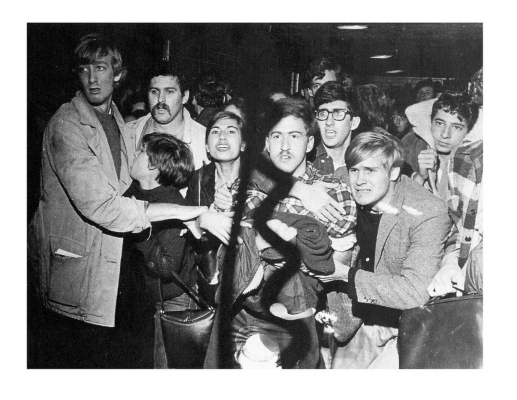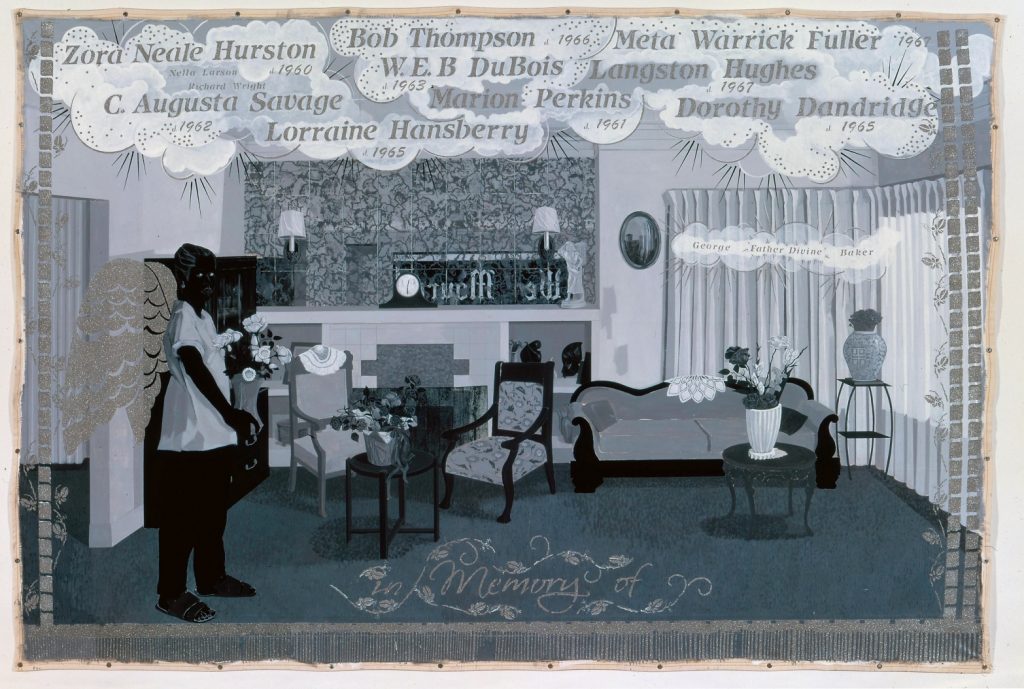Why the Sixties Won’t Go Away: Read an Excerpt from “The Art of the Return” by James Meyer
More than any other decade, the sixties capture our collective cultural imagination, and in his new book, The Art of Return: The Sixties and Contemporary Culture, James Meyer turns to art criticism, theory, memoir, and fiction to examine the fascination with the long sixties and contemporary expressions of these cultural memories across the globe. In this excerpt, he offers a look at our continual fascination with the decade.
Summer 1969. The summer to end all summers. On a steamy night in June the furious patrons of the Stonewall Inn fought back during an abusive police raid, igniting the GLTBQ movement. That July Neil Armstrong and Buzz Aldrin gathered lunar rocks as the world watched. August witnessed the Manson murders of Sharon Tate and four houseguests, and Leno and Rosemary LaBianca. Hundreds of thousands of young people gathered on a farm in upstate New York for the greatest rock concert of the age; Jimi Hendrix concluded Woodstock’s “Three Days of Music and Peace” with a heavy metal rendition of the “Star Spangled Banner,” a searing prosecution of the Vietnam War. By the end of the year, 48,736 US troops had given their lives in the Indochina theater.

All this happened a half-century ago. Yet the “Sixties” remains ever-present. Our own time has been marked by fiftieth anniversaries of Sixties events: memorials of the March on Washington and the Selma March in 2013 and 2015; academic conferences and journal issues dedicated to 1968, the most iconic Sixties year; recent celebrations of the Stonewall Uprising and the Apollo 11 mission. The Sixties returns and returns. Why is this so?
Revolutionary eras are different from other periods. We remember them more acutely than other times because the changes that occurred then are so profound we are still absorbing them. The world was radically transformed during the long Sixties, a period stretching roughly from the mid-Fifties to the mid-Seventies, from Brown v. the Board of Education to the Watergate scandal and Fall of Saigon.

An-My Lê, Rescue, 1999-2002. Gelatin silver print. An-My Lê.
The revolution was moral, cultural, and political. Enovid (the Pill) licensed new sexual freedoms. The rise of the Civil Rights, GLTBQ, Native American, and feminist movements introduced the politics of identity that have become central to our own moment. The publication of Rachel Carson’s Silent Spring (1962) and founding of Earth Day in 1970 catalyzed the environmentalist awareness that defines our own moment. New Left critiques of the “System” instigated current critiques of corporate capitalism and inequality. At the same time, President Nixon’s “Silent Majority,” the constituency of white and evangelical voters alienated by the counterculture and the politics of identity would evolve into President Trump’s “base.” The decision to serve in Vietnam or avoid the draft continues to define the reputations of such figures as Trump, Robert Mueller, and the late John McCain. Watergate remains a central, if ultimately inadequate, reference in current discussions of Russian election interference and the Mueller Investigation. The Sixties leaves a mixed legacy. There is not one “Sixties” but two. The “good” Sixties is hopeful, idealistic: the era of “Camelot,” of Martin Luther King, Jr.’s “I Have a Dream” speech, of Be-Ins and the Moon Landing–a period when the modernist idea of revolution still felt vital and real. The “bad” Sixties is violent, entropic. The Klan murders of four girls in Birmingham and voting rights volunteers in Mississippi; the assassinations of King and the Kennedys; and the anarchic riots in Watts, Detroit, and Chicago are among its defining images. In 1969, the two Sixties collided. Members of the Manson “Family,” a grotesque perversion of hippie ideals of community and free love, were revealed as the perpetrators of the Tate-LaBianca murders. A concert organized by the Rolling Stones at the Altamont speedway in December left four people dead. Described by Rolling Stone as “rock and roll’s all-time worst day,” Altamont represented the meltdown of Sixties utopic ideals.

The Sixties remains a ready analogy and constant target. To some, the era stands for King’s dream of social justice and equality, a dream unfulfilled. To others, it represents a Pandora’s Box of moral delinquency and government overreach. The Supreme Court decision Shelby County v. Holder (2013) overturning provisions of the 1965 Voting Rights Act; near-total abortion bans recently signed into law in several states; and the administration’s attacks on the 1965 Immigration and Nationality Act and Great Society programs such as the Supplemental Nutrition Assistance Program repeal Sixties initiatives.
The Sixties is a battleground of memory, and a springboard of imagination. Artists and writers, many of whom were born then, reexamine a period they absorbed before they could grasp it. “Sixties children” are late and post-Boomers, the generation that missed Woodstock. Novelists Jennifer Egan, Nathan Hill, and Viet Thanh Nguyen; artists Kerry James Marshall, Renée Green, and An-My Lê; Matthew Weiner, producer of Mad Men, and countless others revisit that time to explore its mythologies, both “good” and “bad.” Is it any wonder that Alfonso Cuarón Orozco (b. 1961) set his masterpiece Roma during the Dirty Wars in Mexico City in 1970-71, when student activists were gunned down during the Corpus Christi Massacre, meticulously reconstructing these events in film? Or that Quentin Tarantino’s Once Upon a Time… in Hollywood returns us to the summer fifty years ago when the Tate-LaBianca murders wreaked havoc in the director’s hometown? (Tarantino, who was six then, describes 1969 as the year that “formed” him.)

In his 2008 campaign book The Audacity of Hope, President Obama, another Sixties child, lamented that the preceding two presidential elections had been dominated by “the psychodrama of the Baby Boom generation,” exemplified by the “swiftboating” of Democratic candidate and Vietnam veteran John Kerry by supporters of a president and vice president who had avoided service. Obama called for an end to Sixties fractiousness, a new era of comity. His prediction turned out to be premature. As it turns out, the “Sixties” is outlasting the Boomers. It haunts our memories, influences our culture. The social and political fissures that emerged then shape our public discourse. The Sixties ended a long time ago, yet we have not entirely left it.
The Art of Return is available now! Find it on our website, online at any major booksellers, or at your local bookstore.
James Meyer is a curator of Modern Art at the National Gallery of Art in Washington, DC. He was previously the Winship Distinguished Research Associate Professor of Art History at Emory University and deputy director and chief curator of the Dia Art Foundation.